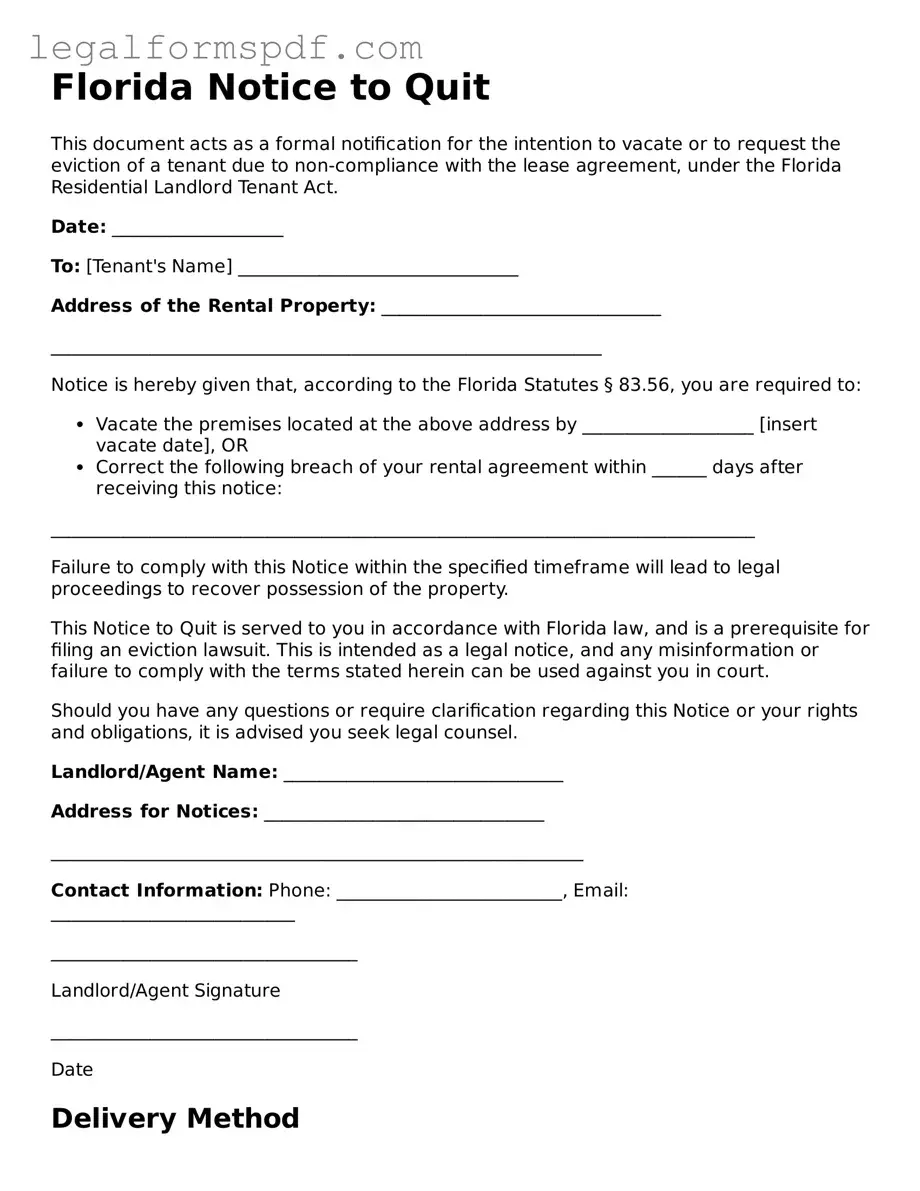What is a Florida Notice to Quit?
A Florida Notice to Quit is a legal document used by landlords to inform a tenant that they are in violation of their lease agreement terms, specifying the issue and providing a set period for the tenant to remedy the violation or vacate the premises.
When should a landlord issue a Florida Notice to Quit?
Landlords should issue a Notice to Quit when a tenant has violated lease terms, such as failing to pay rent on time, causing significant damage to the property, or engaging in illegal activities on the premises. It serves as an official first step in the eviction process if the violation is not corrected.
What types of Florida Notice to Quit are there?
There are mainly two types: the Notice to Pay Rent or Quit, for situations involving unpaid rent, and the Notice to Cure or Quit, for other lease violations. The time frames and requirements for these notices can vary based on the specific violation.
How much time does a tenant have to respond to a Notice to Quit in Florida?
The response time can vary. For unpaid rent, tenants typically have three days to pay or vacate. For other lease violations, tenants may have up to seven days to correct the issue or leave the property, depending on the lease's terms and the nature of the violation.
Can a tenant dispute a Florida Notice to Quit?
Yes, tenants can dispute a Notice to Quit if they believe it was issued without cause or in error. They should seek legal advice and, if necessary, prepare to present their case at a hearing.
Is it necessary for a Notice to Quit in Florida to be notarized?
While notarization is not a legal requirement for a Notice to Quit in Florida, having the document notarized can add a level of formality and may help in the event of a legal dispute.
How should a landlord deliver a Florida Notice to Quit to a tenant?
Delivery methods can include hand delivery to the tenant, mailing via certified mail with a return receipt, or leaving the document in a conspicuous place at the tenant's residence if direct contact is not possible. Selecting a method that can be documented is recommended.
What happens if a tenant ignores a Florida Notice to Quit?
If a tenant fails to respond to the notice by either remedying the violation or vacating, the landlord can file for eviction with the court. This initiates a legal process that can result in the tenant being forcibly removed from the property.
Does a Florida Notice to Quit guarantee an eviction?
No, it is the preliminary step in the eviction process. If the tenant corrects the violation within the specified time frame, eviction may be avoided. However, non-compliance after a Notice to Quit can lead to court proceedings and potential eviction.
Where can landlords or tenants find more information about Florida Notice to Quit forms?
They can consult the Florida Statutes, local housing authority websites, or seek advice from a legal professional specialized in property law. These resources provide comprehensive guidance on how to correctly prepare and serve a Notice to Quit, specific to Florida's legal requirements.
